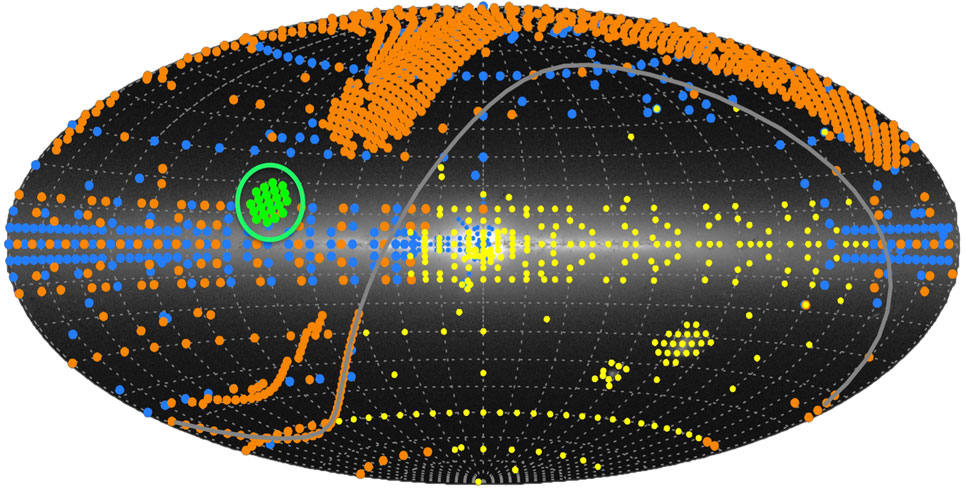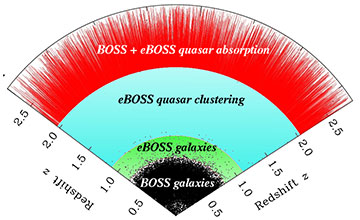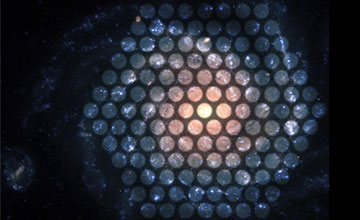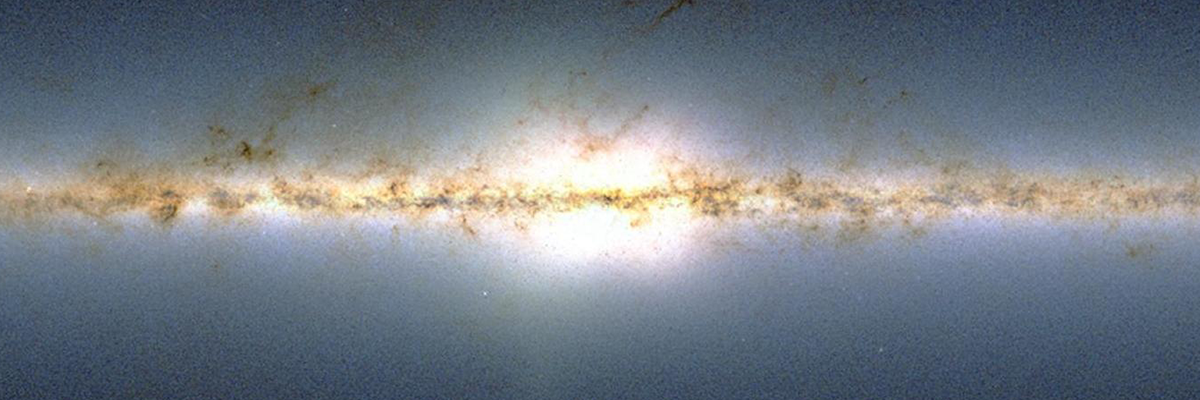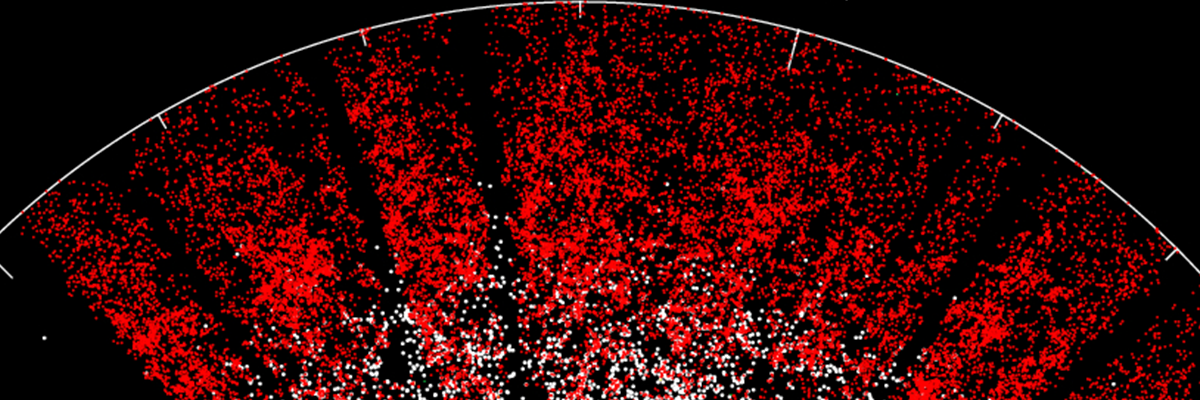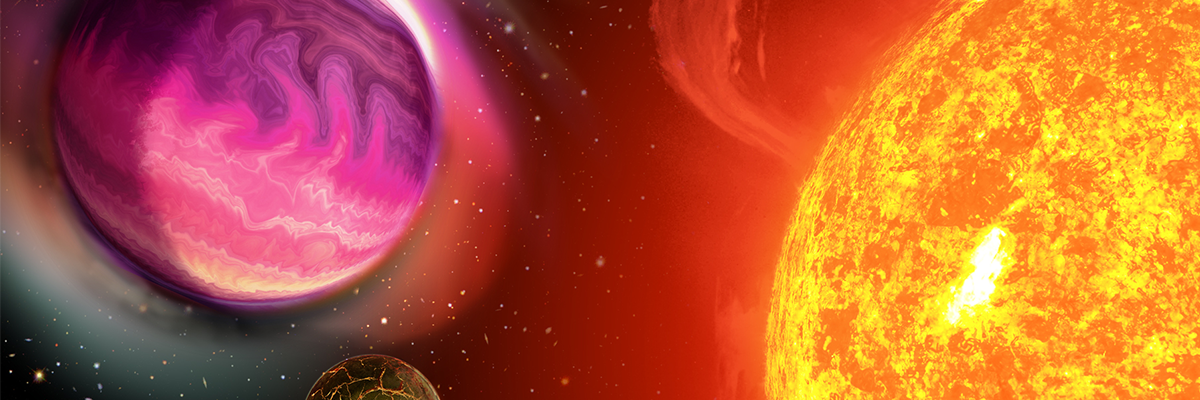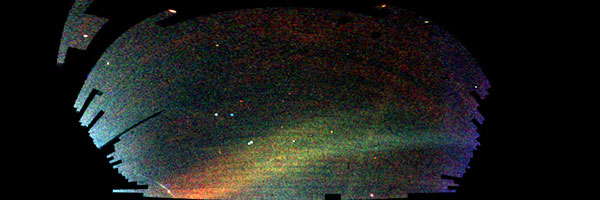Sloan Digital Sky Surveys
SDSS-V: Current Surveys
The SDSS-V Pioneering Panoptic Spectroscopy program started observing in October 2020, and consists of three surveys, known in SDSS-V terminology as mapper programs.
- Milky Way Mapper is a multi-object spectroscopic survey to obtain near-infrared and/or optical spectra of more than 4 million stars throughout the Milky Way and Local Group
- Local Volume Mapper is an optical, integral-field spectroscopic survey that will target the Milky Way, Small and Large Magellanic Clouds, and other Local Volume galaxies
- Black Hole Mapper is a multi-object spectroscopic survey that emphasizes optical spectra (often also with multiple epochs of spectroscopy) for more than 300,000 quasars
More information on SDSS-V and its mappers, including how to join SDSS-V, is available on the sdss5.org website.
SDSS-IV: Surveys (2014-2020)
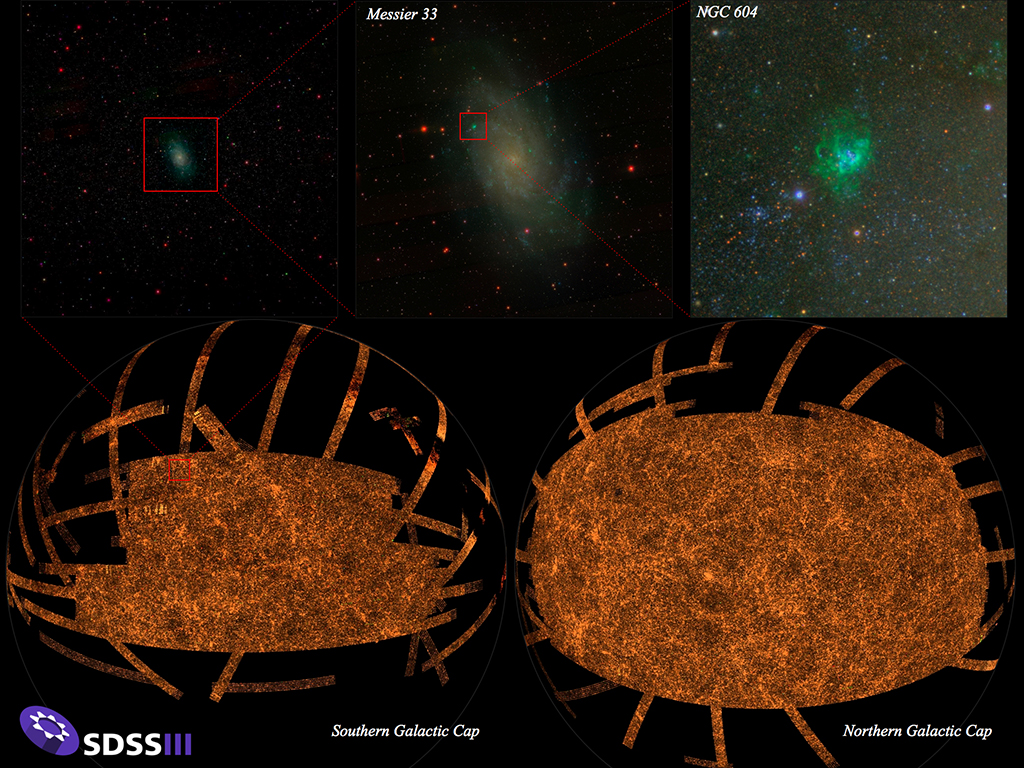
After nearly a decade of design and construction, the Sloan Digital Sky Survey saw first light on its giant mosaic camera in 1998 and entered routine operations in 2000. While the collaboration and scope of the SDSS have changed over the years, many of its key principles have stayed fixed: the use of highly efficient instruments and software to enable surveys of unprecedented scientific reach, a commitment to creating high quality public datasets, and investigations that draw on the full range of expertise in a large international collaboration. The generous support of the Alfred P. Sloan Foundation has been crucial in all phases of the SDSS, alongside support from the participating institutions and national funding agencies in the U.S. and other countries.
The latest generation of the SDSS (SDSS-IV, 2014-2020) is extending precision cosmological measurements to a critical early phase of cosmic history (eBOSS), expanding its revolutionary infrared spectroscopic survey of the Galaxy in the northern and southern hemispheres (APOGEE-2), and for the first time using the Sloan spectrographs to make spatially resolved maps of individual galaxies (MaNGA). Two smaller surveys will be executed as subprograms of eBOSS: the Time Domain Spectroscopic Survey (TDSS) will be the first large-scale, systematic spectroscopic survey of variable sources; while the SPectroscopic IDentification of eROSITA Sources (SPIDERS) will provide an unique census of supermassive black-hole and large scale structure growth, targeting X-ray sources from ROSAT, XMM and eROSITA. Finally, the MaNGA stellar library (MaStar) will provide an optical stellar library covering a wide range of stellar parameters.
APOGEE-2
A stellar spectroscopic survey of the Milky Way, with two major components: a northern survey using the bright time at APO (APOGEE-2N), and a southern survey using the 2.5m du Pont Telescope at Las Campanas (APOGEE-2S).
Explore APOGEE-2
eBOSS
A cosmological survey of quasars and galaxies, also encompassing subprograms to survey variable objects (TDSS) and x-ray sources (SPIDERS).
Explore eBOSS
MaNGA
The galaxy survey for people who love galaxies! MaNGA will explore the detailed internal structure of nearly 10,000 nearby galaxies using spatially resolved spectroscopy. Subprogram MaStar will provide an optical stellar library covering thousands of stars with a wide range of parameters.
Explore MaNGA
SDSS-III: Prior Surveys (2008-2014)
APOGEE
The Apache Point Observatory Galactic Evolution Experiment (APOGEE) focuses on the structure and evolution of our own Milky Way galaxy using high-resolution infrared spectroscopy.
Explore APOGEE
BOSS
The Baryon Oscillation Spectroscopic Survey (BOSS) focused on mapping the Universe on the largest scales, creating the largest volume three-dimensional map of galaxies to date and measuring the scale of the Universe to one percent.
Explore BOSS
MARVELS
The Multi-Object APO Radial Velocity Exoplanet Large-area Survey (MARVELS) searches very nearby stars for evidence of "exoplanets" surrounding them.
Explore MARVELS
SEGUE-2
The Sloan Extension for Galactic Understanding and Exploration (SEGUE) focuses on the structure and evolution of our own Milky Way galaxy. The SEGUE-2 survey builds off of the work of SEGUE-1.
Explore SEGUE-2
SDSS: Prior Surveys (2000-2008)
Legacy
The original SDSS observing plan, which ran from 2000 to 2008, is now known as the SDSS Legacy Survey. It resulted in a uniform, well-calibrated map of the Universe that will be used for decades to scientific studies ranging from asteroids to the large-scale structure of the Universe.
Explore Legacy
Supernova
The SDSS Supernova Survey, which ran from 2005 to 2008, performed repeat imaging of one stripe of sky along the celestial equator. The project discovered more than 500 type Ia supernovae, which have led to a deeper understanding of the history of the Universe.
Explore the Supernova Survey
SEGUE-1
The primary goal of SEGUE-1 was the kinematic and stellar population study of the high-latitude thick disk and halo of the Milky Way.
Explore SEGUE


